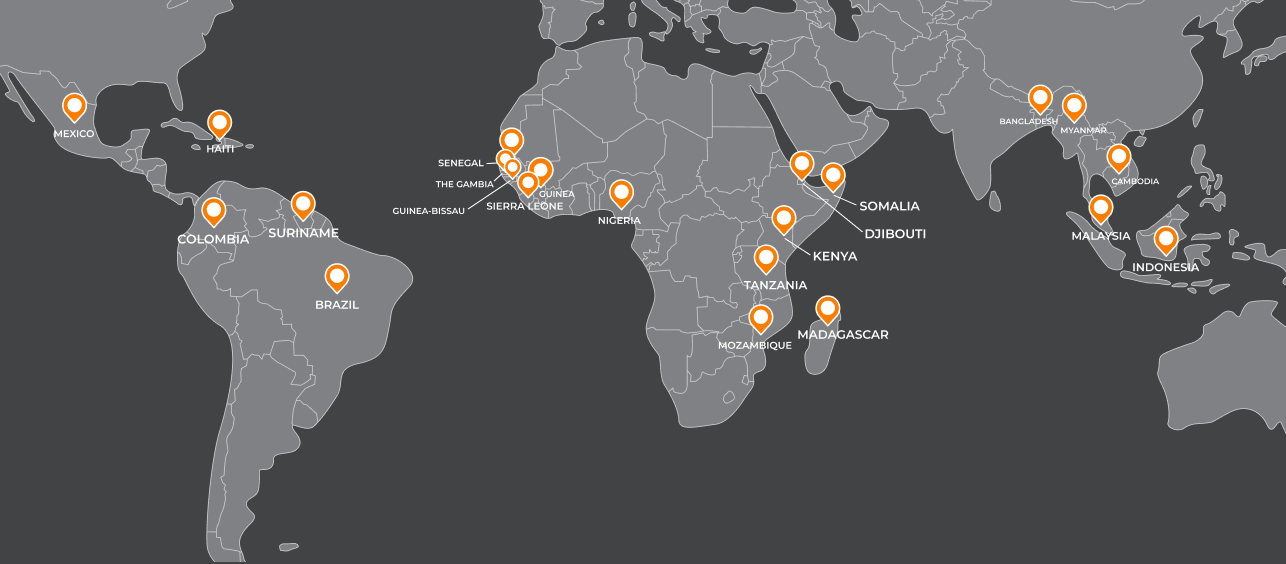The Earth Security Index 2017 was featured in the article by GreenBiz. The piece has been reproduced below with the permission of the author.
By Devon Edwards, 11 October 2017
The Report is a monthly wrap-up of recent research on sustainable business and clean technology, produced by Corporate Eco Forum, a by-invitation membership organization comprised of large, global companies that demonstrate a serious commitment at the senior executive level to sustainability as a business strategy issue.
America’s Clean Energy Frontier: The Pathway to a Safer Climate Future (PDF) (Natural Resources Defense Council) finds that the United States could cut its GHG emissions by at least 80 percent by 2050 through four emission reduction strategies:
- Increase investments toward more efficient and electric vehicles, appliances, buildings and industrial plants to cut energy use by nearly 50 percent.
- Expand renewable energy so that wind and solar power represent at least 70 percent of our electricity mix by 2050 — renewable energy, as a whole, will account for at least 80 percent.
- Use this near-zero-carbon electricity to displace direct use of fossil fuels.
- Move to lower-carbon fuels such as clean biofuels produced from sustainable biomass.
Circular Carbon Innovation: An Unrealized Investment Opportunity (Circular Carbon Network) identifies barriers to advancing circular carbon technologies, including policy and regulatory risk uncertainty, capital intensity, unavailability of data and standard financing models. The report also offers solutions to overcome these barriers based on insight from investors and industry stakeholders.
Cities in the Circular Economy: The Role of Digital Technology (PDF) (Ellen MacArthur Foundation and Google) identifies a range of digital technologies that will serve as enablers of a circular economy in cities, and provides examples of how Google has deployed some of these technologies in its own operations.
Corporate Carbon Policy Footprint (PDF) (InfluenceMap) identifies 50 of the 250 largest listed, non-state-owned, companies that are most influential in shaping climate and energy policy based on three factors: stance on climate policy; engagement intensity; and overall economic clout. The report claims that 35 out of the 50 companies evaluated are "actively lobbying against climate policy," while the other 15 companies are throwing their weight behind an "ambitious climate policy agenda."
The Earth Security Report 2017 (PDF) (Earth Security Group) analyzes 39 dimensions of country risk that are material to the private sector to help global business better understand how to align its strategies with sustainable growth priorities within each country. The report also offers specific recommendations for the following sectors: Automotive (air pollution and traffic accidents in Africa); Pharmaceuticals (overuse of antibiotics and water pollution in India); Energy Infrastructure (regional water cooperation in China); Consumer Electronics (working conditions in Southeast Asia); Agribusiness (climate change and poverty in Latin America).
Feeding Ourselves Thirsty: Tracking Food Company Progress Toward a Water-Smart Future (Ceres) evaluates the water risk management performance of 42 major food sector companies, across four industries, on a 0-100 point scale based on overall corporate governance and management of water risk; as well as actions to reduce water risks and impacts in their direct operations, manufacturing supply chain and agricultural supply chain.
The Growing Demand for Renewable Energy Among Major U.S. and Global Manufacturers (PDF) (David Gardiner and Associates) finds that 83 percent of the 160 largest manufacturing companies with operations in the U.S. have set a GHG reduction target; 25 percent have set a renewable energy target. The report also finds that manufacturers are responsible for nearly 40 percent of total corporate outreach on renewable energy policy to policymakers between 2015 and 2017.
No Country for Coal Gen (Carbon Tracker) finds that retiring unprofitable coal plants could save U.S. consumers $10 billion annually by 2021. The report also offers a tool that helps investors identify unprofitable coal plants to reduce their exposure to regulatory risk.
The Road to Sustainable Urban Logistics (PDF) (UPS and GreenBiz Group) finds that 95 percent of companies surveyed are aware of the impacts — primarily air quality and traffic congestion — urbanization will have on business growth and sustainability, yet only 47 percent feel prepared to address these challenges. A majority of survey respondents (72 percent) believe that businesses need to work closely with city officials to identify and address these urban environmental and social challenges.
The State of Renewable Energy Procurement (GreenBiz Group and Apex) assesses the state of renewable energy procurement based on survey responses from 153 companies across nearly 18 industries. Key findings included:
- 84 percent of survey respondents plan to actively pursue or consider a direct clean energy purchase over the next five to 10 years.
- 57 percent of companies surveyed have established a renewable energy target. Their primary drivers include addressing energy and emissions goals (70 percent) and demonstrating corporate leadership (65 percent).
- Lack of internal company alignment (55 percent) was cited as the top barrier among companies not actively purchasing renewable energy.
- Onsite renewables (55 percent) and RECs (49 percent) were cited as the top renewable energy purchasing strategies among companies surveyed.
States, cities and businesses leading the way: A first look at decentralized climate commitments in the U.S. (New Climate Institute and the Climate Group) claims that the U.S. could achieve around half of its pledge to the Paris climate agreement by 2025 if the 342 climate commitments made by U.S. sub-national actors and businesses are fully implemented. In this scenario, the report estimates that GHG emissions would be reduced by up to 14 percent below 2005 level by 2025.
Sustainability Reporting Trends in North America 2017 (The Centre for Sustainability and Excellence) analyzes sustainability reporting practices and trends across 551 companies in the United States and Canada during 2015-2016. The report finds that 65 percent of companies used the Global Reporting Initiative’s (GRI) reporting guidelines, and most companies following reporting guidelines did not seek external assurance. The report also finds that over three-quarters (79 percent) of sustainability reports were published by public companies in North America during 2015-2016.
Towards a Sustainable Economy: The Commercial Imperative for Business to Deliver the U.N. Sustainable Development Goals (University of Cambridge Institute for Sustainability Leadership) identifies eight business-led approaches to maximize the chances of delivering the SDGs. The eight approaches include:
Align the core business with sustainable outcomes
- Acknowledge the need for change and position the business for a sustainable future.
- Experiment with sustainable business models.
- Treat the SDGs as a holistic agenda.
Demonstrate leadership on key issues and build followership
- Take an early lead on the most material issues and communicate your ambition to others.
- Set a vision for a sustainable sector and build the evidence for others to follow.
Create space for innovation, collaboration and leadership
- Bring the key parties on board to create a better conversation and collectively intervene.
- Bring people along on the journey.
- Help governments raise the bar.
Understanding the Financial Value of Environmental Performance in Consumer Goods (PDF) (Accenture, CDP and Hermes Investment Management) analyzes nearly 2,400 company disclosures and insights from senior executives and investors to determine whether companies are reporting financial value from strong environmental performance. Key findings include:
- Four in 10 telecommunications and consumer goods companies reporting to CDP do not capture or report any financial value from strong environmental performance.
- 30 percent of firms analyzed are reporting revenues generated from sustainable, low-carbon products and services.
- 65 percent of environmental initiatives payback in three years or less and 86 percent within 10 years based on an analysis of payback periods for over 12,000 initiatives between 2014 and 2016.
Explore the reports
The Earth Security Index Reports provided in-depth analysis of critical themes across selected industries and market geographies, enabling investors to anticipate and respond to emerging global dynamics. Download and explore the full Earth Security Index reports:












































